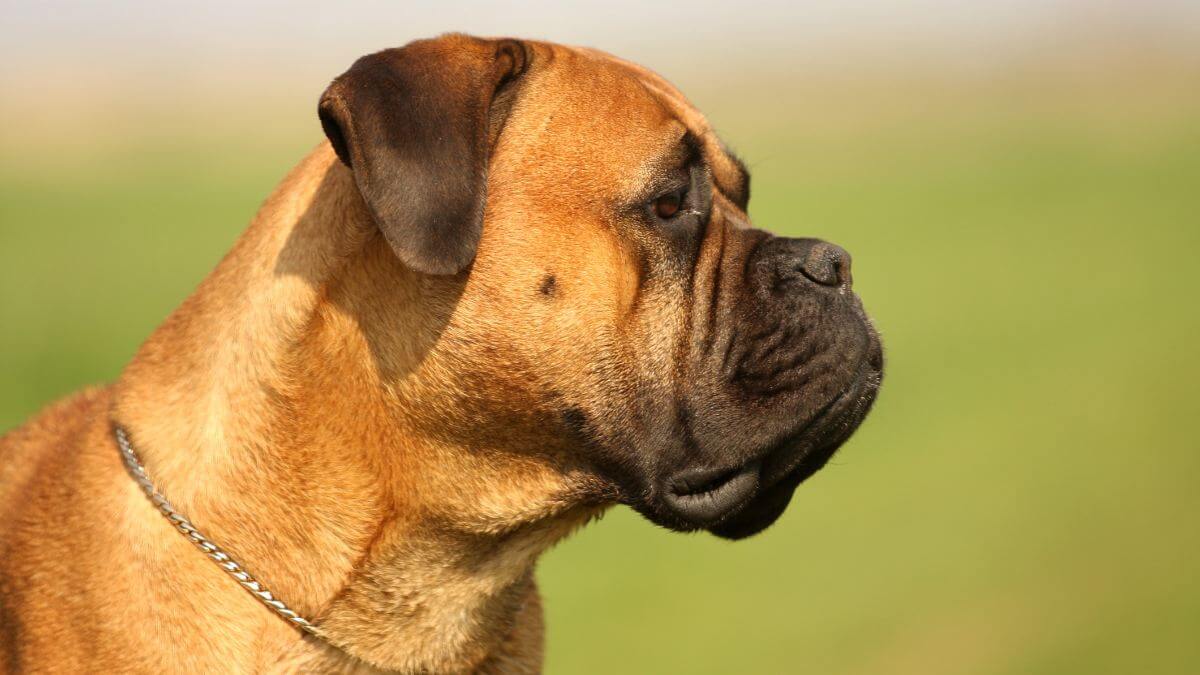


Home » Judging the Bullmastiff

This article was originally published in Showsight Magazine, July 2013 issue.
Anyone who has spent any amount of time observing the Bullmastiff will undoubtedly remark upon the inconsistency of type in the breed. This is not only evident when comparing dogs from one area of the country to another but is also a fairly common occurrence at regional specialties and local weekend shows.
This disparity is not due to the lack of attention or due diligence of Bullmastiff breeders but rather can be attributed to a fairly liberal breed standard as well as the difficulty of breeding “true” in a breed with a genetic makeup that includes the extremes of the nineteenth-century Bulldog and the Mastiff.
Yet, as Adele Pfenninger writes in the Bullmastiff Handbook, “Interpretation of the standard by each breeder accounts for the differences in each strain, but ultimately and ideally, all [Bullmastiffs] should look more alike than they look different.”
Thus, while judges unfamiliar with the breed may find variation in type to be somewhat disconcerting, a recognition and understanding of the quintessential characteristics of Bullmastiff breed type will lead to sound, appropriate, and intelligent assessments when judging the Bullmastiff.
A cursory reading of the Bullmastiff standard reveals a number of terms or concepts repeated time and time again. The continued reference to a particular attribute is indicative of its importance to breed type.
The most frequently mentioned concept in the Bullmastiff standard has to do with proportion. The standard alternatively refers to the Bullmastiff as “symmetrical,” “nearly square,” “compact,” “short” backed, and “well-balanced.”
This suggests that an essential Bullmastiff characteristic is a nearly square appearance. This may come as a shock to those who have spent any time with the breed, as it is quite probable that the majority of Bullmastiffs encountered have been more rectangular than square.
However, it is important to keep in mind that it is not only size but also proportion that distinguish the Bullmastiff from the larger and longer Mastiff. In profile and from all angles, the Bullmastiff should appear square. Thus, when considering the Bullmastiff, an important point to remember is that long is always wrong.
The overabundance of long-backed dogs in the ring is not due to an inherent misunderstanding of the standard on the part of Bullmastiff breeders but rather to the difficulty of breeding a short-backed dog that is balanced.
Breeders compensate for a lack of balance front and rear by producing a long-coupled dog. Excessive length of body can mask a multitude of structural faults that affect how a dog covers the ground.
Remember that a Bullmastiff does not require a long back to move well; rather, it is balance—moderate rear angulation and complementary shoulder layback—that makes a good-moving Bullmastiff.
A square Bullmastiff that is structurally correct will move smoothly with power and drive, making maximum use of its moderate angulation, just as the standard recommends.
The concept of squareness also applies when considering the Bullmastiff head. In the Bullmastiff ring, you will undoubtedly find a variety of head types, as the liberal Bullmastiff standard allows for a range of interpretation.
However, it is important to remember that each individual element that comes together in the Bullmastiff headpiece should contribute to its square appearance.
This applies not only to traits such as the broad, deep muzzle and the large skull with well-developed cheeks—which Bullmastiff breeders often refer to as a “cube on a cube”—but also to such characteristics as ear set, shape and size, the width of the underjaw, and eye shape and placement.
Rather than think of each of these attributes separately, base your assessment on the degree to which they contribute to the nearly square appearance of the Bullmastiff head.
Another concept that appears with some regularity in the Bullmastiff standard is substance. The Bullmastiff is described as “powerfully built” and “showing great strength.”
Its neck is “very muscular” and almost equal in circumference to the skull; its chest is referred to as “wide and deep,” with ribs well-sprung and well set down between the forelegs; the loin is “wide and muscular;” the hindquarters are “broad and muscular;” the forelegs are “well-boned;” the shoulders are defined as “muscular but not loaded.”
And as the standard reads, other things being equal, the “more substantial dog” is favored.
These points of emphasis provide a fairly vivid image of how the Bullmastiff should appear: strong, thick, sturdy, muscular, substantial, and powerful.
The determined focus on muscle and substance convincingly removes any doubt as to the incorrectness of dogs that are weedy, rangy, tubey, or fine-boned.
It also suggests that it is not enough for the Bullmastiff to be solid, but that substance should be an indication of muscle and bone rather than sheer mass attained by too many trips to the food bowl.
Because the Bullmastiff has a short coat, there is rarely a need to run one’s hands over the dog to ascertain whether or not it is well-muscled; it should be visible for all to see.
It is interesting to note that, other than a reference to weight range, there is no differentiation between dogs and bitches in the Bullmastiff standard in reference to substance. Thus, a bitch is a scaled-down version of the dog; she is not petite but substantial relative to her slightly smaller size.
The emphasis on substance often leads to the false assumption—among judges and fanciers alike—that when it comes to the Bullmastiff, bigger is better. This notion fails to consider another recurring and crucial concept in the Bullmastiff standard: moderation.
A focus on moderation tempers the tendency to breed the extreme characteristics of either the Bulldog or the Mastiff into the Bullmastiff. It takes into consideration the purpose for which the Bullmastiff was bred—to knock and hold down poachers on nineteenth-century English estates—and the corresponding need for a dog that was strong, powerful, agile, quick, and moderate.
The call for moderation in the standard is evident in both the size parameters as well as the description of physical characteristics. The top of the standard for males is 130 pounds; females are to be no larger than 120 pounds. This is significantly less than the recommended sizes of giant breeds such as the Great Dane, Mastiff, and St. Bernard. A correct Bullmastiff should never approach these weight categories; unfortunately, many of them do.
This meandering into “giant” territory is often the result of a long back and the extra weight necessary to produce substance in a long-coupled dog. A compact, moderate dog that weighs 130 pounds is all the Bullmastiff necessary to handle the job it was bred to do.
The standard also calls for:
These characteristics—individually and collectively—describe a dog that is not exaggerated in any manner. It depicts a dog that is clean, solid, tight, and sound. Thinking of the Bullmastiff as a moderate rather than giant breed will help you to disregard the dogs that are too big, too sloppy, too long, and too overdone.
As Richard Beauchamp wrote in Solving the Mysteries of Breed Type, “Everything in the Bullmastiff standard assures us of a dog that will stand its ground and protect at all costs.” Thus, temperament may be considered the ultimate indicator of Bullmastiff breed type.
The standard describes the Bullmastiff as “fearless and confident, yet docile.” Bullmastiff expression is referred to as “keen, alert, and intelligent.” Breed function is defined as “a dependable family companion and protector.”
These collective traits were necessary for the job the Bullmastiff was originally bred to do and are appropriate for the duties it instinctively takes on today. These qualities should be taken into consideration when assessing the Bullmastiff in the ring as well as when approaching the individual dog for examination.
Do not let the friendliness of most Bullmastiffs dissuade you from thinking of the breed as a formidable guard. Although much of the “sharpness” has been bred out of the modern Bullmastiff, one should never forget the original working function of the breed and treat the Bullmastiff with attentiveness, courtesy, and most important of all, respect.
You should never get in a Bullmastiff’s face, nor should you give it a playful slap on the rump. As it is not uncommon for males in particular to be dog-aggressive, one should not pack the dogs in the ring too tightly. Despite the briefness and liberal nature of the Bullmastiff standard, it is not in any way inadequate or incomplete. By examining it closely for recurring themes and points of emphasis, one can get a very secure sense of what to look for when judging the Bullmastiff.
If, after reading the standard, you are able to picture a dog that is confident and alert, square in head and body, moderate, powerful and substantial, and balanced front and rear, you are on your way to recognizing the quintessential characteristics of Bullmastiff breed type.